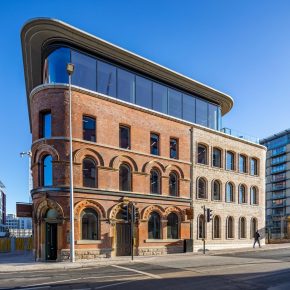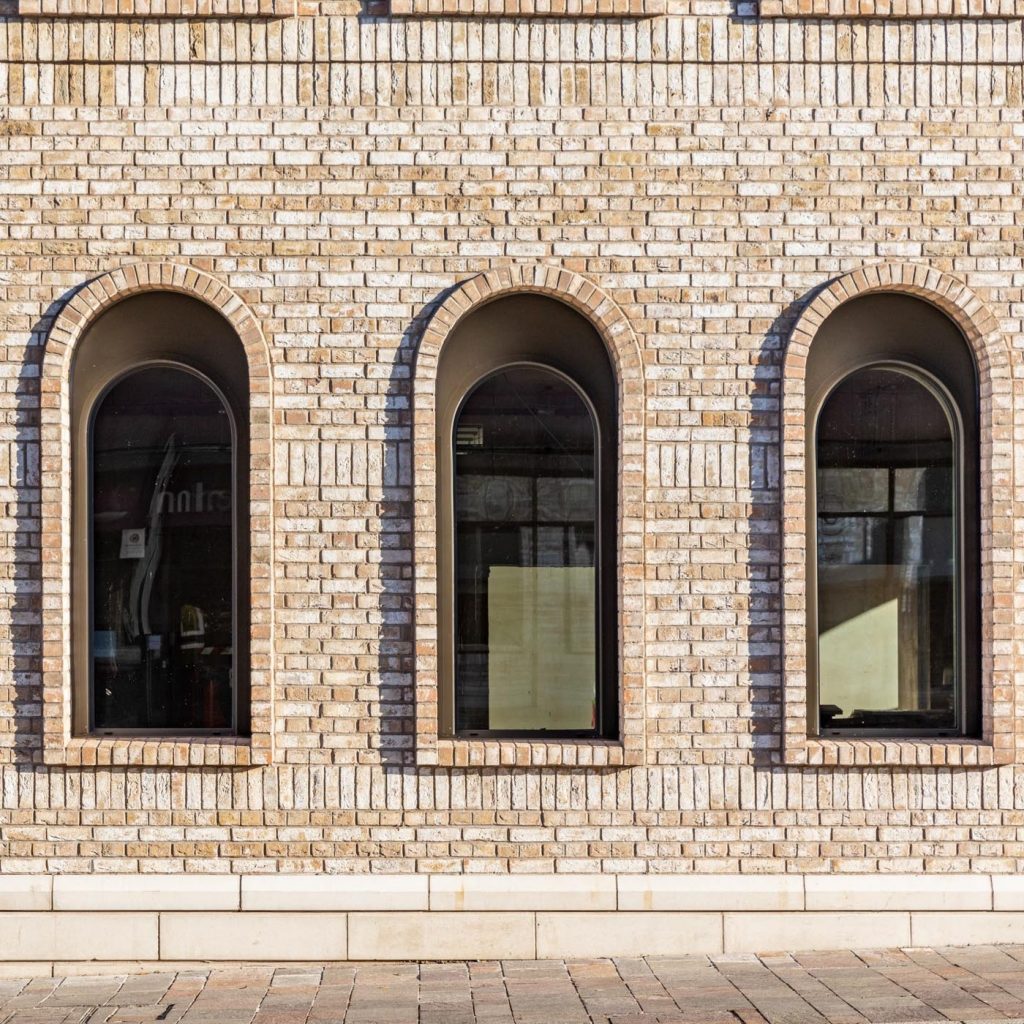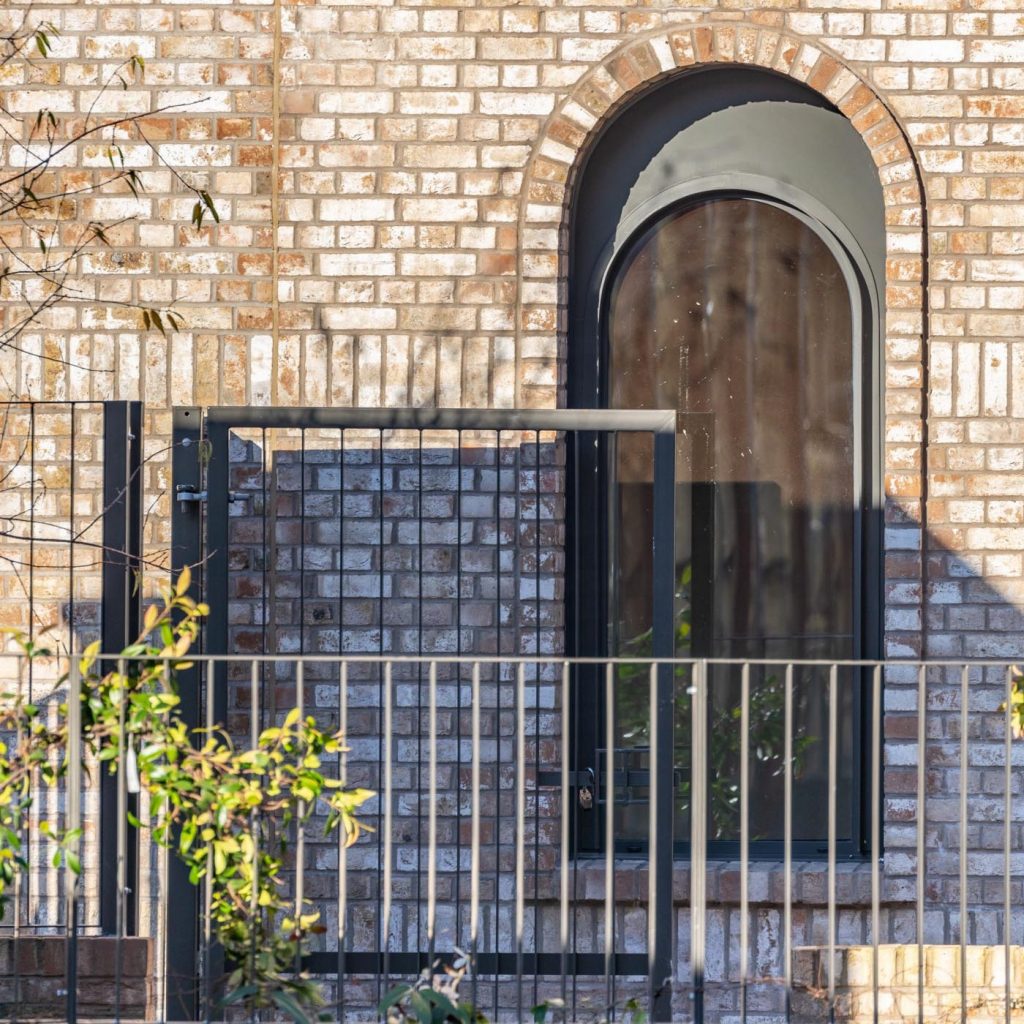
Architectural Anodising explained with Aluprof
What is anodising and why is it proving popular again? Aluprof ask that very question in this in-depth article.
“We live in an architectural aluminium world which is predominantly powder coated in a multitude of colours which offers warranties for colour and gloss retention over an extensive lifetime. Anodising, on the other hand, has all but disappeared apart from it appearing on a few prestigious projects.
In simple terms, anodising is an evenly controlled ‘corrosion’ of the surface of the aluminium, turning aluminium into ‘aluminium oxide’ similar to iron oxide (rust) on steel.
The difference with aluminium oxide is that once it has been created on the surface of the aluminium it completely seals the base aluminium from further corrosion, unlike steel.
So anodising is not an applied finish but a conversion of the surface of the aluminium, so it will not peel or flake. Done to the right quality and the materials, life expectancy can last many decades without fading.
The anodising process is accomplished by immersing aluminium into an acid electrolyte bath and then passing an electric current through the medium.
A cathode is mounted to the inside of the anodising tank and the aluminium itself acts as an anode. Oxygen ions are released from the electrolyte to combine with the aluminium atoms on the surface of the profile.
Anodising is simply a highly controlled process of a naturally occurring phenomenon.
Anodising aluminium profiles for fenestration takes a specialist plant as the immersive process requires long tanks, often up to 7 metres long to accommodate full lengths of aluminium profile, which is a heavy investment.

Once installed, every plant acts differently and the learning curve is as equally complex for the operator.
So what about the ‘die lines’? Simply put, dies which have visible faces require more attention prior to use for an anodised finish.
These dies need to be polished and cleaned more regularly as the extrusion process can be quite abrasive on the surface of the die.
More complex shaped dies have what is know as ‘weld lines’, this is where the die design incorporates an internal mandrel, often to create a hollow profile.
Where the aluminium flows around the mandrel supports and joins again within the die, this often leads to higher temperatures at this point and can affect the anodising by changing its shade.
Die design can be changed to put these weld lines on a corner, or recess to make it less visible, but with an increase in die cost.
Aluprof, one of the largest producers of aluminium fenestration systems in Europe, produce dies that are dedicated to each finish. The more expensive, often hand finished dies, are kept for anodising specifications.
Another key to creating a good anodised finish is the ability to extrude and anodise within a short space of time, thereby reducing the opportunity for natural oxidisation beginning to occur.
Aluprof extrude profile through these higher quality dies which offer higher quality surfaces with a significant reduction in ‘die lines’ and ‘weld lines’. Once these profiles are etched and anodised they offer a high quality surface which is both very hard wearing and long lasting.
Anodising standards generally referred to include BS EN ISO 7599:2018 – ‘Anodising of aluminium and its alloys — Method for specifying decorative and protective anodic oxidation coatings on aluminium’ and QUALINOD, a independent association located in Zurich.
Whilst the QUALINOD specification includes a specific anodising specification to meet an architectural standard; BS EN ISO 7599 mainly deals with general anodising for engineering use and is a method of specifying, not a specification in its own right.
Unless the specifier is experienced in agreeing the criterion for the finished product under BS EN ISO 7599:2018, then the QUALINOD specification should be used as it lays down criterion and it’s licenced members are also inspected by an independent test house to ensure compliance with the QUALINOD standard.
The QUALINOD standard does encompass almost all of BS EN ISO 7599, but goes much further to ensure anodising is fit for architectural use. Aluprof are a licenced member of QUALINOD.
Anodising is also now becoming a choice for pretreatment of aluminium prior to powder coating. A very thin anodising of just five microns seals the aluminium prior to powder coating.
This sealing or ‘conversion coating’ has traditionally been completed in chrome or chrome free coatings. The claim for the use of ‘pre-anodising’ or ‘flash anodising’ prior to powder coating is that it avoids the appearance of a type of corrosion known as filiform corrosion.
Anodising plants are also very costly to design and install, utilising high voltage and specialist transformers to rapidly and evenly create an anodised finish.
Because of its combined use of a finish in its own right and as a ‘conversion coating’ prior to powder coating, in the UK alone there has been two new anodising plants come on-line in the last couple of years with further plants planned.

As specifiers tend to specify shades of grey for the majority of fenestration projects, anodising can be specified in both bronze finish and shades of grey.
This is created by the introduction of trace metals such as cobalt or tin during the anodising process. Interestingly, as the anodising is ‘clear’, the introduction of these metals forms an optical colour, which cannot fade over time.
As aluminium hardness will differ from profile to profile and grades differ, for example when using sheet aluminium in cill pressings, it is inevitable that the anodic film will vary in composition which will lead to a natural variation in perceived colour.
As aluminium profile is extruded the material takes on a ‘grain’, so the same anodised profile turned through 90 degrees will also vary in shade.
This is a natural effect and most specifiers see this offering a richness to the very hard wearing finish that anodising can offer.
To limit colour variation it is normal for the supplier of the anodising to offer upper and lower colour limits at the time of specification.
Crucial for specifiers is the knowledge that higher quality dies should be used for producing profiles for anodising and this is something that should find its way into specification for the finish.
It then becomes crucial to ensure that the systems company that can offer extrusions at a higher quality, dedicated for anodising, also offer the finished profile.
With these quality issues in mind, the specifier will be aware of the need to choose a quality company for the anodising process and ensure that the aluminium is of the highest quality with its surface free from natural corrosion.
It is normally best to specify an aluminium systems supplier who can offer quality anodising, otherwise issues can arise where the systems company and anodiser are unwilling to rectify issues with surface finish problems.
This can lead to expensive replacements in finished projects. Unlike powder coating, anodising can’t be repaired on-site.
Since setting up the Aluprof Project Office at the Business Design Centre in London the systems company has rapidly grown their specification influence in the UK with their high performance architectural aluminium systems.
With overseas growth across Europe spreading into the Middle East and firm roots already in the East of the USA, the company is becoming a global player in facade supply.”
Aluprof UK
Unit A5
Altrincham Business Park
Stuart Road
Altrincham
Cheshiire
WA14 5GJ
UK
(0044) 161 941 4005
Visit Supplier's page
Latest news

17th April 2025
Nuaire shares expertise at Specifi Mechanical Services events in 2025
Indoor air quality and ventilation manufacturing specialist Nuaire is pleased to be exhibiting at the Specifi Mechanical Services events once again in 2025.
Posted in Air Conditioning, Articles, Building Industry Events, Building Industry News, Building Products & Structures, Building Services, Exhibitions and Conferences, Facility Management & Building Services, Heating, Ventilation and Air Conditioning - HVAC, Restoration & Refurbishment, Retrofit & Renovation
15th April 2025
West Fraser: CaberDek earns top marks from Home Counties carpentry specialist
A specialist carpentry sub-contractor covering housing sites across a large swathe of the Home Counties has come to value CaberDek from the West Fraser range for a variety of reasons: not least because the high quality panel product doesn’t destroy his operatives’ electric saws!
Posted in Articles, Building Industry News, Building Products & Structures, Building Systems, Case Studies, Restoration & Refurbishment, Retrofit & Renovation, Roofs, Timber Buildings and Timber Products, Wooden products
15th April 2025
GEZE: The Role of Access Control Systems in Enhancing Building Safety
Jane Elvins, Specification and Business Development Manager at GEZE UK, delves into the role of access control systems in enhancing building safety…
Posted in Access Control & Door Entry Systems, Architectural Ironmongery, Articles, Building Industry News, Building Products & Structures, Building Services, Doors, Facility Management & Building Services, Health & Safety, Restoration & Refurbishment, Retrofit & Renovation, Security and Fire Protection
11th April 2025
Don’t Do a Dave! It’s Time to Lock FIT Show 2025 in Your Calendar!
It’s that time again – FIT Show is back! You could be forgiven for thinking there won’t be much new to see when FIT Show returns to the NEC from 29 April – 1 May. Wrong!
Posted in Articles, Building Industry Events, Building Industry News, Building Products & Structures, Building Services, Continuing Professional Development (CPD's), Exhibitions and Conferences, Information Technology, Innovations & New Products, Restoration & Refurbishment, Retrofit & Renovation, Seminars, Training
 Sign up:
Sign up: